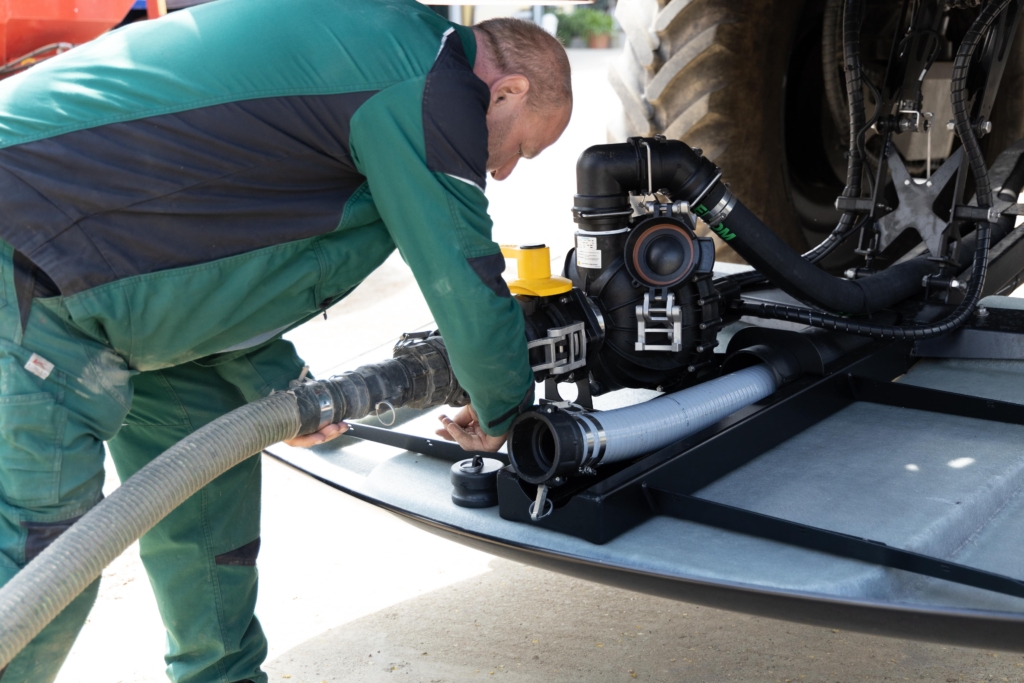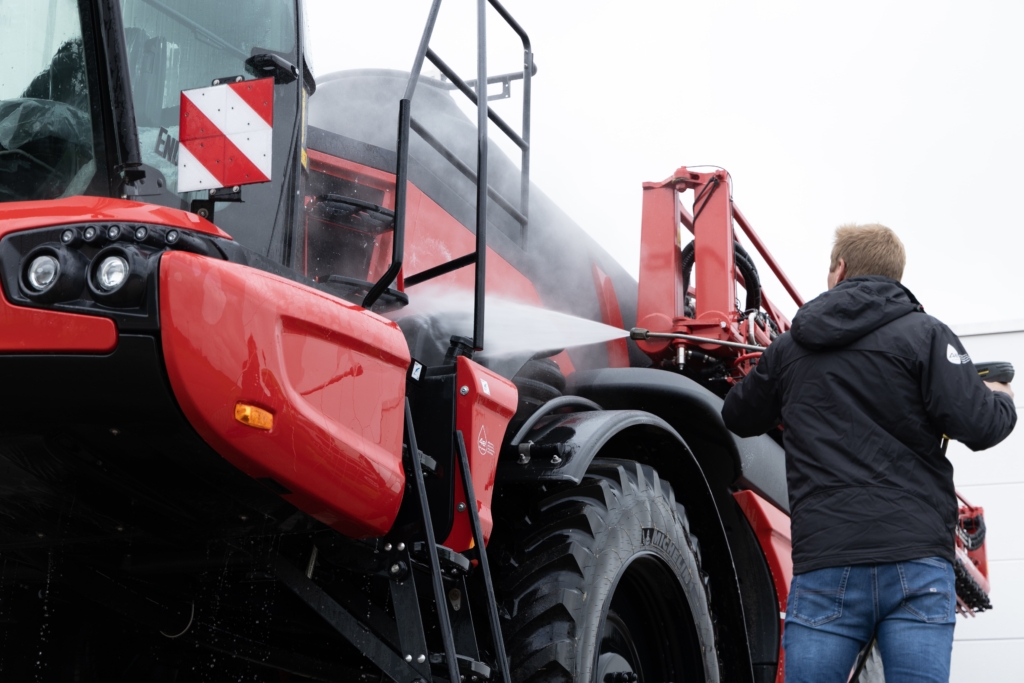5 tips to prepare your sprayer for the new season
Thursday 21 March, 2024
As a grower, your crop sprayer’s efficiency is vital for a high-quality yield and nutritious crops. Neglecting winter preparation may lead to downtime and delays in the new season. To further heighten the preparation for the new season, we’ve devised a checklist on how to prepare your crop sprayer.
1. Cleaning of the machine
Review the previous season’s sprayer usage. Evaluate whether the sprayer will be in operation more extensively this year. Ensure confidence in the overall cleanliness of the sprayer, encompassing tank reservoirs, spray lines, and nozzles. Despite a winter cleanout, continuous prevention of contamination is vital. Employ a pressure washer or a water and detergent mixture for a thorough component clean.
2. The Nozzles
Carefully check nozzles for clogs or wear. These issues can cause problems during spraying and may be easily overlooked if not inspected closely from the cab. Prevent uneven spray distribution and maintain the effectiveness of crop protection products by examining each nozzle for residue or debris from the previous season. Clean or replace as needed, plus inspect screens and cab filters, including optional charcoal filters for category 4 cabs, to ensure they are free from historical residue.

3. Thorough check-over
Despite your regular maintenance routine, thoroughly inspect your crop sprayer before the new season. Check for mechanical issues, including pins, bushes, and joints. Examine the boom and suspension system and inspect seals and gaskets for wear. Replace damaged components to prevent leaks and maintain a tight seal in the spraying system. Additionally, after winterizing, remember to empty and clean the machine of anti-freeze.

4. The pump
Inspect for any signs of wear, corrosion, or damage. Next, calibrate your sprayer by checking flow rates, pressure levels, and nozzle patterns. Adjustments may be necessary based on changes in nozzle wear and tear, pump performance, or other factors that may affect calibration. Check for perishing or leaks on hydraulic pipework at the same time as checking the pressure gauge. Fill with water and run to 5-bar pressure to check whether there are any signs of dripping or moisture.
5. Regular maintenance
Consider adding checks such as engine oil, cooling liquid level, hydraulic oil and wheel hub checks to your machine walk-arounds every so often throughout the season. Keeping on top of these checks little and often, could help you save a lot of time and effort in the long run.
During the off-season, storing your machine in a clean, dry shelter will help protect it from weather conditions, rodents and other potential contributors to damage. Regularly attending to your sprayer enhances equipment longevity. Follow our cleaning, maintenance, and uptime tips for peace of mind in each new season. And don’t forget to always adhere to your manufacturer’s care guide.















